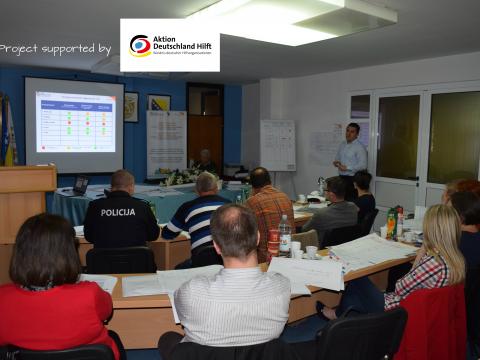Making Communities Safer in Emergencies

World Vision’s latest project helps keep high-risk municipalities safer in emergencies.
As a country, Bosnia and Herzegovina has significant experience dealing with natural disasters such as floods and landslides. The frequency of these events shows that there is a widespread risk of persistent hazard conditions which can lead to devastating effects from cumulative disasters. Only two years ago, in May 2014, Bosnia and Herzegovina was hit by the worst floods and landslides in the country’s history: 25 people died while more than one million people, one third of country’s population, was affected. Around 90,000 people were forced to leave their homes.
Despite this recent natural disaster, many municipalities in Bosnia and Herzegovina still have underdeveloped or non-existent municipal structures when it comes to civil protection. Many also lack technical equipment and clear communication channels on local level to be able to respond in the event of an emergency. These combined factors put the population at a greater risk of losing lives, suffering economic damage or being unable to access basic services in emergencies.
With this in mind, World Vision designed the “Towards Resilient Communities in Bosnia and Herzegovina – Fostering Inter-Municipal Learning in Disaster Preparedness” project, supported by the German cooperation Aktion Deutschland Hilft. The project connected relevant members of communities - civil protection services, the Red Cross, municipal services, police, etc. - together to assess risks in their communities and tasked them to create an Action Plan for emergencies. As part of the project, much-needed tools and equipment for protection in emergencies will also be donated to the communities.
“Currently, safety conditions for our students and teachers are not on the level we would want them to be. And, for sure, they are not on the level prescribed by the law,” says Dzenan Hodzic, director of a primary school with more than 900 students. Although the school buildings were not affected during the 2014 floods, roads and bridges leading to it were, so children could not get to school to attend classes. “I could talk for hours about different issues in schools. But what is important is that together with governmental and nongovernmental sector, we are working to try and fix [the problems]. This project will for sure help create a safe environment for our students.”
Dzenan is one of the 15 community representatives who have gathered in the local municipality building to be part of World Vision’s training and discuss risk assessments in cases of floods, fires, earthquakes, droughts and landmines.
“The capacities of the municipality are scarce when talking about emergencies,” says Nevenka Gavranovic, assistant to the mayor for Civil Protection Services in one of the municipalities where the project was conducted. “This project encompasses various structures of the municipality life and, in some cases, these structures only now understood that they need to be part of emergency preparedness. In my opinion, this is very important characteristic of the project.”
For more information on disaster risk reduction in Bosnia and Herzegovina, watch our short movie Be Informed, Be Prepared.